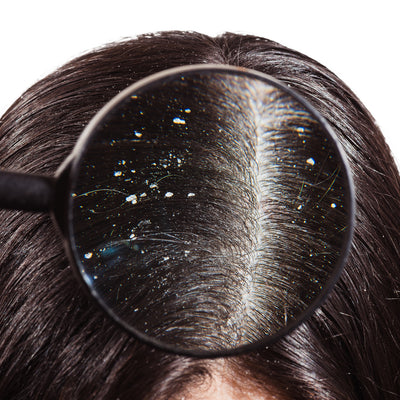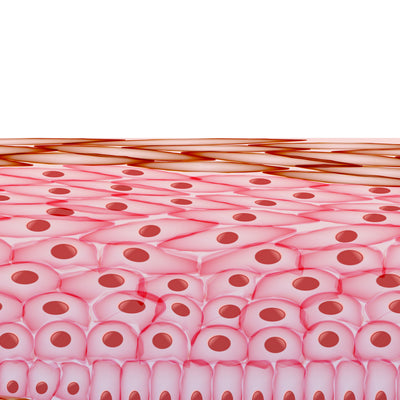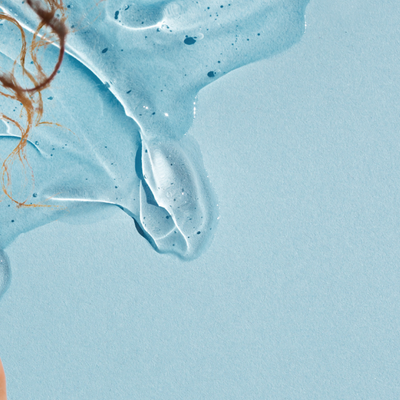
The Ultimate Guide to Deep Conditioning Part 1
The Ultimate Guide to Deep Conditioning Part 1
Susan Walker| February 28, 2015

So I’ve gone blonde. Well not entirely blonde but there are some blonde hi-lights in my hair. And I absolutely love them. However the lighter I go, the more damaged and dry my hair becomes. So I have to make an extra effort to ensure I deep condition my hair.
This is a practice that I preach to so many women; yet I admit that I don’t have the time to do it much myself. And I could get away with it before because my hair was as natural as it could be.
Not anymore. Not I have some serious colour and a higher chance of breakage, dryness and brittleness due to that colour.
So now I have to DC – deep condition.
There are many different ways women deep condition their hair. But what is the proper way to get the most benefit to the hair? Why are some methods more important than others and what is a complete waste of time. The purpose of this post is to sift through all of the information to give the real truth about this process, and how to get the results your looking for.
So let’s start with…
What is conditioning?
What you’re trying to accomplish with conditioning is to restore or maintain the elasticity of the hair so that it’s better able to withstand combing, brushing, cleansing etc. without too much damage. Conditioning can also improve the appearance of the hair causing it to appear healthy.
Conditioning in general should accomplish the following:
- Ease combing (both wet and dry)
- Increase softness to the hair
- Minimize flyaways
- Reduce the porosity of the hair
- Improve the manageability of the hair
For the most part, a regular moisturizing or hydrating conditioner is able to give these results. However if you hair is damaged then deep conditioning should be a part of your regimen. Damage is any condition where one or more of the hair structures – the cuticle, cortex, medulla, etc. – are physically or chemically altered so much that they are unable to return to their original state. Cuticles can become cracked and frayed, the hair shaft can become cracked damaging the cortex and medulla, and the hair fiber can be exposed and unprotected in extreme cases. Common causes of hair damage include that from regular hair care practices such as mechanical manipulation, to extreme processes like chemical altering. Check out this post for more detailed info.
Once hair has been damaged there is no way to repair it. The only way to rid the hair of damaged areas is by cutting.
What products actually do is temporarily improve the state of the hair to make it look, feel and perform like hair that is healthier, as well as prevent future damage.
Damaged hair typically has the following characteristics:
- Loss of elasticity
- Breaking hair
- Dull-looking hair
- Dry and brittle
- Highly porous
- Split ends or mid-shaft splits
- A lot of tangling
What type of conditioner do you need?
The type of conditioner you use for your hair will depend on your hair texture and the state of your hair. For example, fine limp hair will need a conditioner that can increase body and thick, dry hair will require a conditioner that can be used for softness and moisture. Reconstructors containing a lot of protein should be used on hair that is fine, limp and damaged. Moisturizing deep conditioners with a lot of oils, emollients and moisturizers should be used on hair that requires softening or is very dry. If your focus is on real deep conditioning then the type of product you use will be important, as well as how that conditioner is used on the hair.
In order to get the best results enough of the conditioning agents must bind to the hair and sufficient amounts of active ingredients must penetrate into the cortex of the hair.
This occurs under one or a combination of the following situations:
- High pH
- Heat
- Time
So in the context of deep conditioning let’s take a look at the factors necessary to properly do so.
High pH
A higher pH results in cuticles that are more open. Hair is most vulnerable in this state but it’s also a great opportunity for the conditioner to really penetrate into the cortex of the hair rather than if the cuticles are closed. Cuticles are typically opened when hair is relaxed or chemically processed in some way. For natural hair, the cuticles are typically not really open unless the hair is very porous or damaged in some way. Using baking soda and castile soap (which are high pH ranges) for cleaning can result in the cuticles opening. I don’t have any experience with either one of these cleansing agents to recommend how to properly use them and as a result, time and the use of heat with the conditioner will be discussed in order to maximize conditioning results.
The amount of time the conditioner is left of the hair
The longer the contact between the conditioner and the hair, the more the conditioning agents can bind to the hair, and active ingredients can penetrate into the cortex. Every ingredient in a conditioner has its own ability to adsorb (adhere) to the surface of the hair and/or penetrate into the hair. Many factors depend on the use of high or low molecular weight proteins, the use of oils with long or short fatty acid chains etc. The key ingredients that can stick to hair like the surfactants, hydrolyzed proteins and polyquats will do so within a few seconds of applying the conditioner. If left on hair for longer the more they will be absorbed. In general the conditioning effect is present for up to 25-30 minutes. After this time absorption of active ingredients has reached its maximum and there is no real added benefit to leaving a conditioner on the hair after 30 minutes.
The Use of Heat
Yes, heat makes a difference. Especially for women with LOW porosity hair. As the hair increases in temperature the possibility of the conditioners penetrating the cortex also increases. What temperature are we talking about? The hair should be at about 60 degrees Celcius (about 140 degrees Fahrenheit) which can be achieved at the medium setting of an electric heat cap.
Stay tuned for Part 2 – the good stuff! We’ll cover the ingredients you need to look for in an great deep conditioner and the steps you should take to get the most out of your deep conditioning.
About Susan Walker
 Susan is the CEO of Earthtones Cosmetics, a licensed Naturopathic Doctor and certified Trichologist with the World Trichology Society.
Susan is the CEO of Earthtones Cosmetics, a licensed Naturopathic Doctor and certified Trichologist with the World Trichology Society.
She has been a speaker and workshop presenter at various national and international conferences including the Taliah Waajid World Natural Hair Health and Beauty Show in Atlanta, the Toronto Natural Hair Show, The Canadian Naturalista Hair Expo and the Natural Hair Congress in Montreal.
Susan performs hair, hair loss and scalp consultations at TrichoSpa by Earthtones in Ajax, Ontario, a holistic skin, hair + scalp spa and curl care boutique. We specialize in corrective curl, scalp and skin care using trichological treatments for various scalp and hair concerns, and corneotherapy to correct skin issues. She has obtained various certifications in hair loss and scalp conditions.
In order to help her clients she has received her Laser Technician Diploma and certificates in Chemical and Mechanical Exfoliation, and Microneedling and Collagen Induction.
She is currently pursuing her Masters in Science in Cosmetic Science.
Featured Articles
-

-

Nurturing Your Scalp: Unveiling the Role of the Stratum Corneum
October 24, 2023 Susan WalkerREAD MORE -




